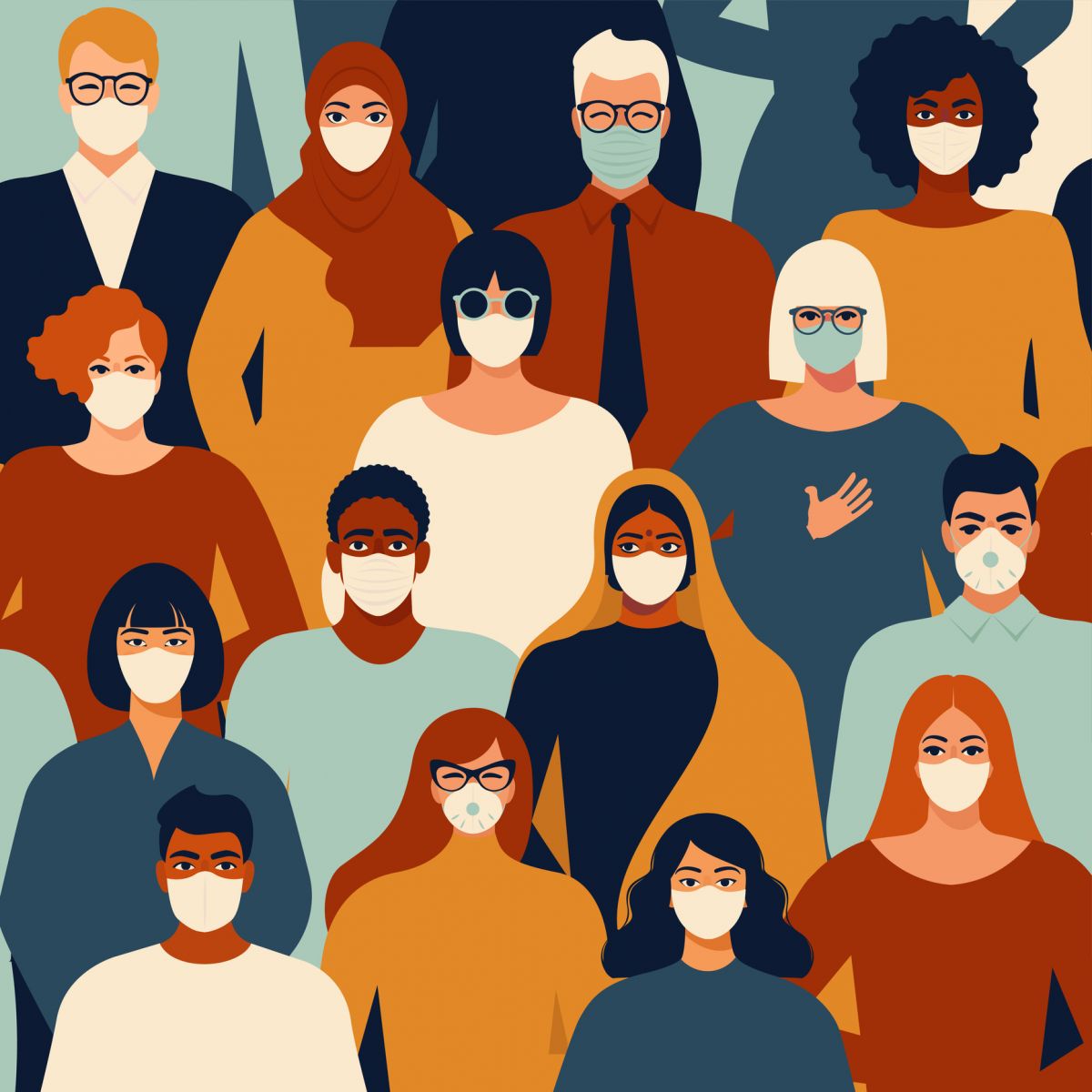COVID Variants, Double Masks, Diabetes, Oh My!
By Eliza Skoler
 As more contagious variants of COVID emerge, it’s especially important to protect yourself and others – experts are now recommending that you wear a double mask if you must be in a public space.
As more contagious variants of COVID emerge, it’s especially important to protect yourself and others – experts are now recommending that you wear a double mask if you must be in a public space.
As COVID-19 has spread around the world over the past year, the virus has been able to change and adapt, creating new versions of the virus called “variants.” This may sound scary, but scientists were watching and expecting this to happen. Viruses like the ones that cause COVID-19 or the flu are constantly mutating and changing – that’s why it’s so important to get a flu shot every year. So far, some of these COVID-19 variants appear to be more contagious, meaning that it’s easier for the virus to spread between people. Although many of us may feel burdened by the strict safety measures and local restrictions, it’s even more important now to take whatever actions we can to protect ourselves and our communities. This is critical for people with diabetes and their care-partners, since those with diabetes are at a higher risk for severe illness from COVID-19.
How can you protect yourself?
Many experts, including Dr. Anthony Fauci, director of the National Institute of Allergy and Infectious Diseases and medical advisor to seven US presidents, are now recommending that people wear two face masks when out in public. Think of a double mask as a stronger shield – two face masks will provide extra layers of protection from the virus, making it harder for viral particles to get inside your body and infect you. This stronger shield also protects others by blocking particles from your mouth and nose that could potentially carry the virus if you’ve been infected.
Here’s how to double-mask properly:
-
The layer closest to your face should be an air-filtering mask, if you have access to one. These include surgical masks, N95 masks, and KN95 masks. Learn more about face masks with filters from NBC News.
-
Your mask should fully cover your mouth and nose and fit snugly against your face.
-
Wear a cloth face mask on top, as your second layer.
-
Avoid masks that have an air vent or valve. These masks might filter the air that you are breathing in, but they don’t filter the air that you breathe out. This means that if you are carrying COVID, you could infect others.
Do you need to double-mask all the time? It’s most important to protect yourself if you’ll be around people who are not in your household, especially in an indoor space. If you are walking by yourself outside and won’t be near others, it may still be safe to wear just one mask. Keep in mind that COVID-19 has already killed more than two million people worldwide, and you should consider taking extra precautions if you have diabetes. For more information on proper mask-wearing, the CDC has a valuable guide to masks.
It’s critical to continue to avoid people who are not in your household. Minimize your time spent in public spaces, especially indoor public spaces (where it’s easier for the virus to pass between people). This means reducing errands and time spent in stores. When you are out in public stay at least six feet away from others as much as possible. For more ways to prevent the spread of COVID-19, read “Staying Safe – And Staying Well – During a Pandemic Winter.”
How do variants work?
As viruses spread and infect people, they are constantly changing and adapting, leading to mutations. If a mutation gives the virus an advantage (such as allowing it to spread more quickly), it can turn into a variant that becomes the main form of that virus within a population. This is typical for viruses – new variants emerge and decline over time.
What do we know about current COVID variants?
Right now, there are multiple variants of COVID-19 around the world, and three of them – the Brazil, South Africa, and United Kingdom variants – are becoming widespread. Early data shows that these three variants are more transmissible (they spread more easily within a population) and may be able to infect more people with COVID. The big question now is whether these variants may cause more severe illnesses. To learn more, read “What You Need to Know About COVID-19 Variants” from Johns Hopkins University.
What’s the good news?
More and more people are getting vaccinated each day, and those with type 2 diabetes or obesity will be prioritized for early vaccination across the US. As people build immunity against COVID, the virus will spread less within communities. Though it’s not yet certain, it appears that the current vaccines should continue to protect people against the new variants of COVID. As other strains of COVID develop over time, vaccines can be tweaked to match the changed threat. To learn more about the vaccines, read “What You Should Know About COVID-19 Vaccines and Diabetes.” diaTribe, alongside other diabetes organizations, has advocated for all those with diabetes to receive early vaccinations due to the increased risk of severe illness from COVID-19 for people with all types of diabetes.
Finally, you can do your best to protect yourself, your loved ones, and your community by being as careful as possible, continuing to social distance and wear double masks, washing or sanitizing your hands, and getting vaccinated when you are able.








